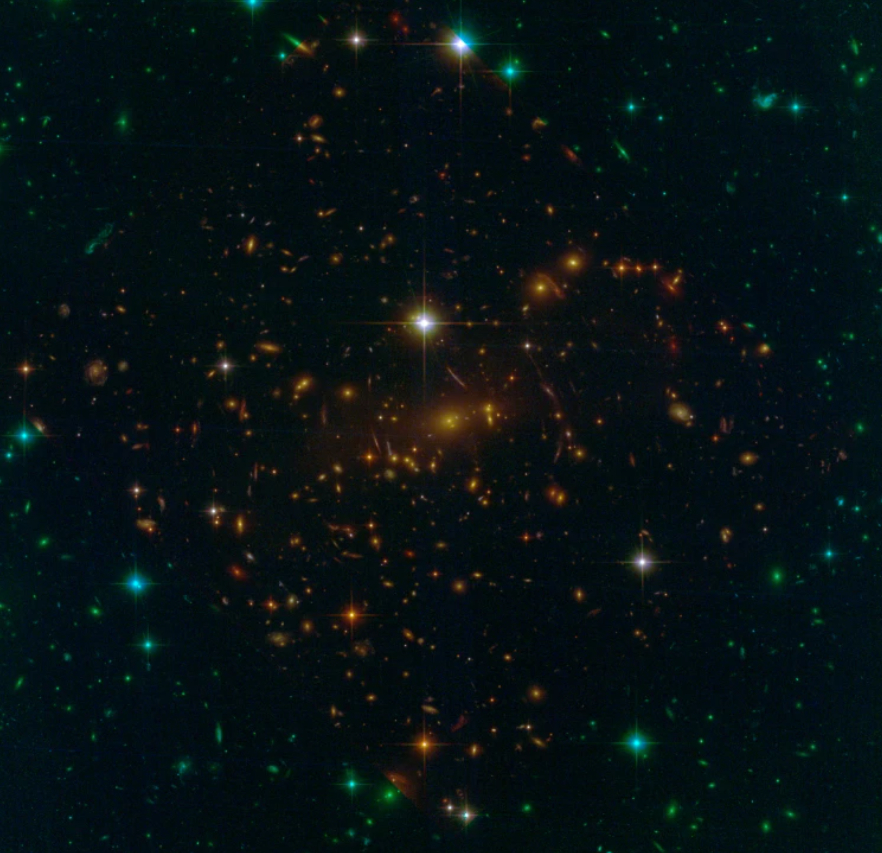
Webb’s First Lightshow
After decades of development and a half-year of space travel, the James Webb Space Telescope finally delivered the clearest images of the deep universe ever captured, as NASA released the first four pictures from the spacecraft.
These photos display two points with crystal clarity: the universe is utterly gorgeous and the James Webb Space Telescope is a giant leap forward for telescope-kind.
Let’s marvel at these new images!
The first image released takes the phrase “grand scale” to an unimaginable level.
It’s reminiscent of the original Hubble Deep Field, the result of pointing the revolutionary Hubble Telescope’s gaze toward a “blank” portion of the sky for 10 days to see what’s actually out there. Hiding in the dark patch were over 3,000 galaxies. The image fundamentally altered the way we viewed distant space.
Webb’s First Deep Field blows the Hubble Deep Field away.



Staggering is the difference in resolution. In addition to the added content from Webb, the time necessary to create the image drastically outperforms Hubble. What can take the older telescope weeks to gather, Webb weaves in 12.5 hours!
To further add to the majesty, the image you see above is not even close to full resolution. Point your browser here to see the full-scale version. You can zoom in to see the multitude of galaxies in remarkable detail.
The First Deep Field deserves more scrutiny. What you see is a cluster of galaxies known as SMACS 0723. More accurately, you see SMACS 0723 as it existed 4.6 billion years ago because the galaxies are 4.6 billion light years away. To help visualize the scale and scope of this photo, if one looked into the night sky and held a grain of sand at arm’s length, that’s the amount of space in the photograph. The spiked objects are stars from our galaxy. Note the curved nature of the redder galaxies. As Neil deGrasse Tyson puts it, these arcs reveal “spacetime curvature from the gravity of a galaxy cluster in the image’s center.” NASA remarks the “combined mass of this galaxy cluster acts as a gravitational lens, magnifying much more distant galaxies behind it.” In other words, this image displays things we have never seen before, including evidence for Einstein’s General Theory of Relativity and its curved spacetime.

Webb’s representation of the Carina Nebula looks like a space painting. The mountainous portions – dubbed the Cosmic Cliffs – display the gaseous activity of star birth. The tallest peaks measure about 7 light years in length!
The differences between Webb and Hubble really crystallize here. In 2007, Hubble captured the nebula thusly:

The next image features the first compact galaxy group ever discovered. First detected in 1877, Stephan’s Quintet exists within the constellation Pegasus. Four of the five galaxies will eventually merge.
Because this grouping was located so long ago, the media attention over Webb’s new imaging is actually not the first time Stephan’s Quintet achieved popularity. In the 1946 classic film It’s a Wonderful Life, when angels in the cosmos decide to intervene in the main character’s life, they take the form of Stephan’s Quintet.
Webb’s capture of the Quintet is the largest it has, to date, imaged. 150 million pixels comprise the mosaic, stitched together from over 1,000 separate images.
Again, resplendent:


2,500 light years away, in the constellation Vela, lies the Southern Ring Nebula. Two stars sit in the center of this nebulosity (great word), though they are not both visible in all bands of infrared. The Mid-Infrared Instrument, pictured below on the right, distinguishes between the separate stars, while the Near-Infrared Camera, on the left, has a harder time producing discrete forms.
If you’re sensing a theme by this point, you’re correct. Looking at another image produced by Hubble, Webb’s clarity is a cut above.


In addition to the wonderful photographs, NASA also released information about an exoplanet, called WASP-96 b. Webb is so powerful that it was able to detect water, clouds, and haze on the planet over 1,100 light years away.
We live in a wonderful period for deep-space detection. If these four delectable images portend the future, the James Webb Space Telescope will treat our eyes for decades to come. And, of course, we’ll learn an extraordinary amount about the universe along the way.
Further Reading and Exploration
Webb Space Telescope – NASA
First Images from the James Webb Space Telescope – NASA
Photos: How pictures from the Webb telescope compare to Hubble’s – NBC
Tool Shows Just How Stunning Webb’s Space Image Is Compared to Older Ones – Newsweek
American Astronomical Society’s WorldWide Telescope Tool














